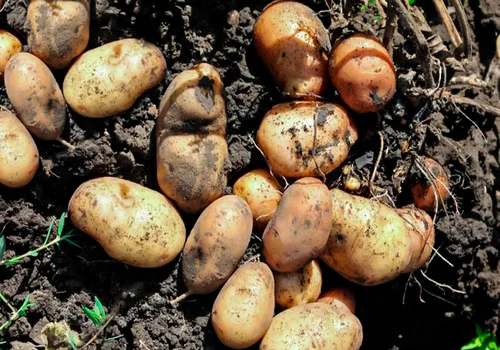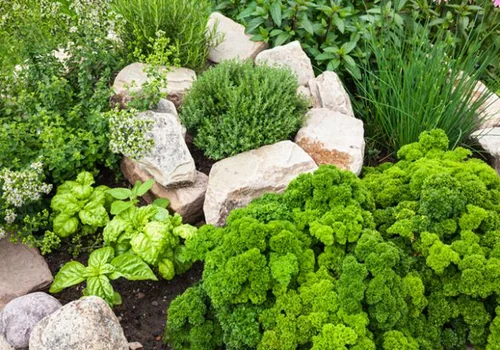Sweet potatoes are a versatile and nutritious crop that every home gardener should consider growing. Not only do they thrive in hot and humid climates, but they also store for months, making them a reliable food source during winter. This article will walk you through the process of starting sweet potato slips from store-bought potatoes and growing your own delicious sweet potatoes at home. You’ll learn about the best planting methods, the varieties to choose, and how to care for your crop from start to harvest.
Why Grow Sweet Potatoes?
Sweet potatoes are an excellent addition to any garden. They are:
- Easy to grow: They require minimal maintenance once planted.
- Disease resistant: Sweet potatoes have very few pests or diseases that affect them.
- Storage-friendly: You can store harvested sweet potatoes for months without any loss in flavor or quality.
- Versatile in the kitchen: Whether roasted, mashed, or made into fries, sweet potatoes can be used in a variety of dishes.
Additionally, growing your own sweet potatoes can help cut down on grocery bills. While store-bought sweet potatoes can be pricey, especially exotic varieties like Okinawan sweet potatoes, you can start your own slips for just a few dollars, producing an abundant harvest.
Understanding Sweet Potatoes: What Are Slips?
Contrary to popular belief, sweet potatoes are not related to regular potatoes. Sweet potatoes are actually tubers of the morning glory vine, and they grow from something called “slips.” These slips are small sprouts that grow from the sweet potato tuber, which will later develop roots and turn into the sweet potatoes we eat.

You can start slips from store-bought sweet potatoes, and this guide will show you how to do it for pennies on the dollar.
Choosing the Best Sweet Potato Varieties
While the orange sweet potatoes found in most grocery stores are delicious, there are many other varieties worth exploring. For example, you can visit your local Asian market to find unique and flavorful sweet potatoes like:
- Murasaki Sweet Potato: This variety has purple skin and white flesh. It’s one of the most flavorful sweet potatoes available.
- Okinawan Sweet Potato: A Japanese variety with white-tan skin and bright purple flesh. It is known for its rich sweetness and vibrant color. These sweet potatoes tend to be expensive, so starting slips from one or two potatoes can save you a lot of money.
When to Start Sweet Potato Slips
Timing is key when it comes to growing sweet potatoes. These plants are tropical and cannot tolerate frost. Unlike tomatoes and peppers, which can survive cooler nights, sweet potatoes need consistently warm temperatures, especially at night.
Here’s how to determine when to start:
- Find your area’s last frost date.
- Add about one month to that date. This is when you should plant your sweet potatoes outdoors.
- Start your slips 60-90 days before your planting date. This gives the slips enough time to grow and be ready for transplanting.
For example, if your last frost date is in late April, you should start your slips in February or March.
How to Start Sweet Potato Slips: The Potting Mix Method
There are several methods to start sweet potato slips, but the most efficient way is to use a moisture-retaining potting mix. While many people root their sweet potatoes in water, using a potting mix is faster and produces healthier slips.
Here’s how to do it:
- Prepare your potting mix: Moisten a good-quality potting mix until it holds its shape when squeezed, but doesn’t drip water.
- Half-bury the sweet potatoes: Place the sweet potatoes in the mix so that they are halfway buried.
- Provide warmth and humidity: Sweet potatoes love warmth and humidity. Place the container in a sunny location where it gets at least six hours of sunlight a day. You can cover the container with a lid, leaving it slightly open to allow air circulation.
In a few weeks, you will start to see slips sprouting from the potatoes. These slips will be ready to separate and plant once they reach a few inches in height.
How to Separate and Prepare Slips for Planting
When your sweet potato slips are ready, you’ll need to separate them from the potato. Here’s how:
- Gently remove the slip from the potato by cutting it at the base.
- Place the slip in a glass of water to encourage root growth. In about a week, roots should form.
- Alternatively, you can plant the slips directly into the ground if they already have roots.
Each slip can be further divided into multiple slips if they have separate root nodes. This way, you can get several plants from just one slip.
Planting Sweet Potato Slips
When planting sweet potato slips, it’s important to wait until the evening or on a cloudy day to avoid direct sunlight that can stress the plants. Plant each slip about 12 inches apart in well-drained soil, and make sure the root nodes are fully buried.
After planting, water them thoroughly and keep the soil consistently moist for the first week or two as the slips establish themselves.
Caring for Your Sweet Potato Plants
Sweet potatoes are relatively low-maintenance once they’re planted. Here are some tips to ensure a healthy crop:
- Watering: Sweet potatoes need consistent moisture, especially in the early stages. Once established, they can tolerate some drought, but it’s best to water them regularly.
- Fertilization: Use an organic fertilizer like a 5-5-5 slow-release formula to promote healthy root growth. You can also add bone meal to help with tuber development.
- Weed control: Keep the area around your sweet potatoes weed-free to prevent competition for nutrients.
Harvesting and Storing Sweet Potatoes
Sweet potatoes are ready to harvest when the vines start to die back, usually after 4-5 months. Carefully dig them up, and let them cure in a warm, dry place for about a week before eating. This curing process allows the sweetness to develop.
Once cured, sweet potatoes can be stored in a cool, dark place for several months.
Frequently Asked Questions
- When should I start sweet potato slips?
Start slips 60-90 days before your area’s last frost date, which usually means starting them in late winter. - Can I grow sweet potatoes in containers?
Yes, sweet potatoes can be grown in containers as long as they have enough space to spread out. - How long do sweet potatoes take to grow?
Sweet potatoes typically take 4-5 months to mature, depending on the variety. - Do sweet potatoes need full sun?
Yes, sweet potatoes require at least 6 hours of direct sunlight each day to thrive. - Can I start slips from grocery store sweet potatoes?
Yes, you can start slips from store-bought sweet potatoes, but make sure they are organic or untreated to avoid growth inhibitors. - How much water do sweet potatoes need?
Sweet potatoes need regular watering, especially in the early stages. After they are established, they are relatively drought-tolerant. - How do I know when to harvest sweet potatoes?
Sweet potatoes are ready to harvest when the vines start to yellow and die back.



